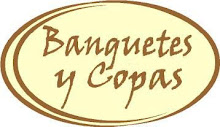Our Experts will Recommend the best places in Santiago
Get your booking and suggestions of some Restaurants for Supper here:
Some Places Recommended:
Tiramisu (Italian - International)
Le Due Torri (Italian - Chilean - International)
Galindo (local Chilean dishes)
Azul Profundo (Fish & International)
Aqui esta Coco (Experts in Fish & Sea food)
Parrilladas Argentinas (Steak House)
Los Buenos Muchachos (Steak House - Show)
Empanadas
In Chile, the most traditional empanada filling is called "pino". Pino is a seasoned mixture of ground beef, onions, raisins, black olives, and hard boiled eggs. The empananda dough is quick and easy to make, and can be made ahead and stored in the refrigerator. The pino tastes best if made the day before and allowed to rest overnight before filling the empanandas.
Prep Time: 35 minutes
Cook Time: 30 minutes
Total Time: 1 hour, 5 minutes
Ingredients:
Empanada dough (Recipe below)
3 large onions, chopped
1 pound ground beef
2 teaspoons cumin
1 teaspoon chile powder
1 tablespoon paprika
1 beef bouillon cube, dissolved in 1/4 cup hot water
2 tablespoons flour
1/2 cup raisins
1/2 cup chopped olives
2 hard boiled eggs, sliced
1 egg yolk
2 tablespoons milk
Cook Time: 30 minutes
Total Time: 1 hour, 5 minutes
Ingredients:
Empanada dough (Recipe below)
3 large onions, chopped
1 pound ground beef
2 teaspoons cumin
1 teaspoon chile powder
1 tablespoon paprika
1 beef bouillon cube, dissolved in 1/4 cup hot water
2 tablespoons flour
1/2 cup raisins
1/2 cup chopped olives
2 hard boiled eggs, sliced
1 egg yolk
2 tablespoons milk
Preparation:
Prepare empanada dough and hill.
Cook the onions and garlic in the vegetable oil and butter until softened. Add the ground beef, cumin, chile powder, paprika, beef bouillon, and salt and pepper to taste.
Cook the beef, stirring and crumbling the meat, until browned. Add the flour and continue to cook for 5 or 10 minutes more.
Remove the meat mixture and let cool. The beef mixture will keep up to 2 days in the refrigerator.
Shape the empanadas: Separate the dough into golf ball size pieces, and roll into smooth balls. Let rest for 5 minutes. On a floured surface, roll each ball of dough into a 6 inch diameter circle, about 1/4 inch thick. Add 1 tablespoon of the beef filling, a few raisins and some chopped olives, and a slice of hard boiled egg to the middle of the circle.
Brush the edges with water and fold the pastry in half over the filling, to make a semi-circle.
Seal the edges by pressing down with your fingers. Brush the sealed edge lightly with water, then turn the edge toward the middle and press with your fingers to seal.
Mix the egg yolk with 2 tablespoons milk, and brush the empanadas with the mixture.
Bake at 350 for 25-30 minutes, or until golden brown.
This recipe produces a sweet dough that contrasts perfectly with savory fillings. Empanada dough is less flaky than pie crust (although you can substitute frozen pie crust dough in a pinch) - it has a tender texture that soaks up the filling.
This dough can be used for baked or fried empanandas. If you are going to fry the empanadas, omit the egg yolk and roll the dough out slightly thinner (less than 1/4" thickness).
4 cups flour
1-2 teaspoons salt
2-3 tablespoons sugar
2 tablespoons butter, chilled
12 tablespoons lard or vegetable shortening, chilled
3/4 - 1 cup water
2 egg yolks
Preparation:
Sift the flour into a bowl. Stir in the salt and the sugar.
Blend the butter and shortening (or lard) into the flour mixture with a pastry cutter or with two knives, until fairly well blended.
Whisk the egg yolks wiht 3/4 cups water. Stir in the 1/2 cup of water/egg mixture, a little at a time until the dough starts to come together smoothly.
Blend the butter and shortening (or lard) into the flour mixture with a pastry cutter or with two knives, until fairly well blended.
Whisk the egg yolks wiht 3/4 cups water. Stir in the 1/2 cup of water/egg mixture, a little at a time until the dough starts to come together smoothly.
Keep kneading the dough, adding more water/egg a little bit at a time as necessary (you made need a few tablespoons extra of water), until the dough is smooth. The dough will seem a bit shaggy until it has thoroughly chilled.
Cover the dough with saran wrap and refrigerate for about an hour. (Dough can also be kept overnight (or a couple of days) in the refrigerator) Dough should be soft and smooth, and not elastic - if you poke a hole in it with your finger, the indentation should remain.
Turn dough out onto a floured surface, and roll into desired thickness.
Makes enough dough for 10-12 large empanadas.
Pisco Sour Recipe
2.5 oz Pisco
3/4 oz fresh squeezed lemon juice
1/2 oz simple syrup
1 egg white
dash Amargo Chuncho bitters (but Angosturra will do just fine)
Chile is today one of the 5th largest exporter of wine in the World. But the wine making and producing data is since the 16th Century, since the European Spanish arrived to the South, Chili as in the native language, "End of" therefore end of the world literaly. Since the weather is mediterranean and similar to France and California, Chile has different Valleys to produce its different kind of grapes according to the special conditions of the weather and landscapes. CARMENERE grape, the ICON of Chilean grapes was discovered by a French ampelographer and represents the body of Chile and Spirit, smooth, spicy and unique. This grape was reediscovered and today the fashion is to drink it blended with other grapes or simply pure with any kind of dish or conversation. Chile has natural barriers since the Mountains in one side, Pacific ocean in the other and Desert and Antartic in both ends so that makes it a very unique and safe place to grow different kinds of products in our volcanic soil.
Brands recommended:
Viñedo Chadwick - Viña Chadwick (limited edition 2008 Carmenere)
Carmin de Peumo . Viña Concha y Toro 2007 Carmenere
Montes Folly - Viña Montes Syrah 2007
Viña Seña - Seña 2008
Don Melchor - Concha y Toro
Cosecha Antigua - Cousiño Macul
Quatro - Viña Montgras
Ninquen - Viña Montgras










